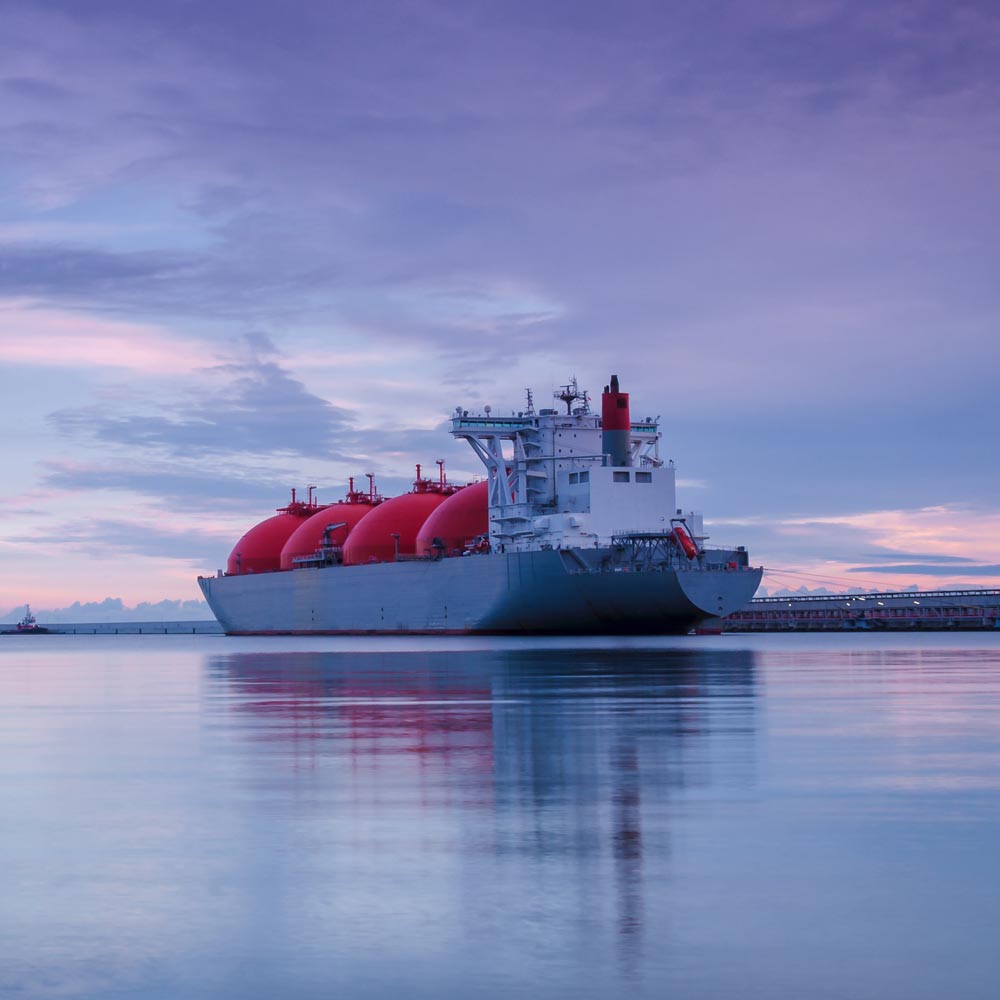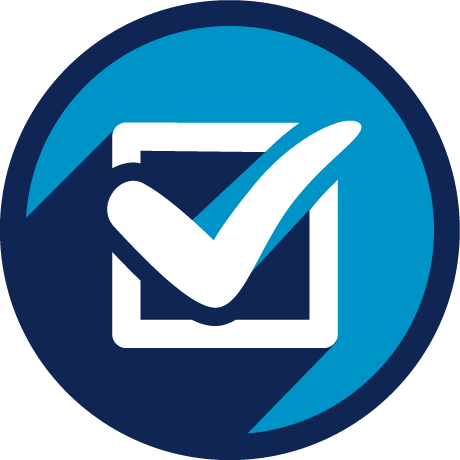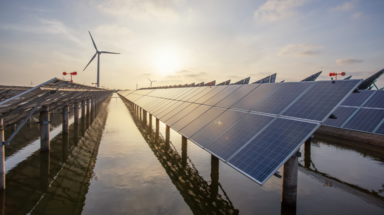LNG Series
Gas Processing Operations eLearning Library

About this Series
The LNG Series ePilot™ Gas Processing Operations Library provides the fundamentals as well as in-depth coverage of gas processing to help develop a highly qualified workforce to maintain operating efficiency and safe working facilities.
This series is comprised of the following ePilot™ eLearning courses:
Turboexpander NGL Extraction is an eLearning course intended for operators and technicians working in a facility where natural gas liquids (NGL) are extracted from natural gas. This may be a facility where the primary purpose is the extraction of NGL’s with an NGL product and a sales natural gas product or it may be part of a facility such as an LNG production facility where NGL’s are extracted prior to the natural gas being liquefied to produce liquefied natural gas (LNG).
The course teaches the purpose of a turboexpander NGL extraction operation, describes why this type of process is used and explains the function and operation of the different parts of the process. The concept of product recovery for NGL products is introduced. The common process schemes for turboexpander NGL extraction are described and explanations of the difference between these common flow schemes are given.
The course will cover a basic knowledge of cryogenic gas processing, the characteristics of the natural gas feed to a turboexpander NGL extraction facility and the product material streams, and how turbo expanders and gas expansion produce the refrigeration required. Descriptions show what the main equipment in a turboexpander NGL extraction facility look like and how each item works.
Learning objectives:
- State the purpose of a turboexpander NGL extraction unit
- Know why this type of process is used
- Basic knowledge of cryogenic processing
- Define cryogenics and turboexpansion.
- Describe the main process flow through a turboexpansion plant.
- Describe the effect of temperature and pressure on hydrocarbon recovery.
- Describe Gas dehydration requirements
- Describe Brazed aluminum heat exchangers construction and operation
- Describe the key operating issues associated with BAHX
- Identify critical surveillance and monitoring requirements for BAHX
The LNG Refrigeration and Heat Exchange eLearning course is intended for operators and technicians working in a liquefied natural gas (LNG) export facility. This course answers the question “what is LNG?” and introduces the concept of refrigeration to achieve temperatures low enough to liquefy natural gas. The commonly used Propane Precooled Mixed Refrigerant process is examined in detail. Using propane refrigeration as an example, the course teaches the principles of refrigeration. A simple refrigerant cascade is explained to show how cryogenic temperatures can be reached. The cooling curve of natural gas is studied.
This course teaches why multiple stages of refrigeration are used and explains how a mixed refrigerant can be used for one of these stages. The requirements of treating the natural gas before it is cooled and condensed at cryogenic temperatures are discussed.
The propane precooled mixed refrigerant (C3MR) process flow schematic is explained. The major equipment items in the flow scheme, compressors, machines, heat exchangers, and vessels, are examined in detail. The type, function, and operation of each item is described. The main cryogenic heat exchanger is described along with its basic construction and operating characteristics.
Learning objectives:
- Describe the overall process flowsheet for an LNG refrigeration process
- Know the properties of LNG
- Know typical feed gas specifications for liquefaction to LNG
- Summarize different LNG processes - APCI C3MR process, COP optimized cascade process, and other processes
- Define common refrigeration cycle terms
- State the purpose of mechanical refrigeration systems
- Discuss how cascade refrigeration can be used to achieve an LNG temperature of -162° C
- Describe how a simple mechanical refrigeration system works and locate the main operating points on a P-H
- Diagram
- Know the properties of propane, ethylene, methane, and mixed refrigerants with regards to phase, temperature, pressure, and enthalpy
- State the purpose of each equipment item in a simple refrigeration system
- Describe the purpose and operation of the closed loop refrigeration equipment in the propane and mixed refrigerant cycles, including: compressors, coolers, condensers, sub-coolers, accumulators, expansion valves, chillers, and compressor anti-surge control systems.
- Discuss how cascade refrigeration works
- Examine Propane Precooled Mixed Refrigerant Process (C3MR) in detail
- Label all process streams, including refrigerants
- Identify all major equipment and state its primary purpose
- Describe common operating problems in refrigeration systems and list some possible mitigation methods
- State the composition specification of the propane and mixed refrigerants, and describe indication, potential operating issues, and mitigation methods if the refrigerant is not on specification
- Describe the principles of operation of coil wound exchangers in cryogenic service and why they are used for cryogenic service
- Describe the construction and operating characteristics of an LNG main cryogenic heat exchanger, including flow paths
- Describe typical warmup / cooldown rates and maximum temperature differentials for cryogenic heat exchangers
- Describe the principles of operation for propane chillers
- Know some useful rules of thumb in estimating impact of process changes
- Summarize key safety aspects of LNG liquefaction
The LNG Storage eLearning course is intended for operators and technicians working in any facility on which LNG is stored.
Using the example of an LNG export facility, LNG storage tanks are described in terms of construction and operation. Different types of storage tanks and the properties of the stored LNG are presented. LNG storage tank primary connections are discussed. Equipment associated with the LNG tanks is described – loading pumps, boiloff gas system, boil off gas compression and the integration of this with fuel gas. Control and monitoring of the LNG tanks including pressure control, level, leak detection, and rollover are covered. Safety systems associated with the tanks are addressed.
The operation of storage tanks, pumps, boil off gas systems and compressors under holding mode, preloading circulation and loading mode is considered along with its impact on fuel gas and liquefaction. Typical boiloff losses associated with LNG storage are covered.
Learning objectives:
- Identify the key components of a full containment LNG tank
- Summarize tank types other than full containment
- State the normal operating conditions for the LNG storage tanks
- Know typical LNG storage tank capacities
- Describe LNG storage tank rollover, conditions resulting in rollover, and the detrimental effects of rollover
- Describe the tank monitoring system used to detect possible rollover conditions
- Identify boiloff conditions, and how tank operating pressure is controlled
- Identify tank overpressure protection systems and pressure safety valve fire extinguisher systems
- Describe type, location and number of LNG loadout (shipping) pumps
- Describe leak detection systems used to detect leaks or failure of the inner tank
- Describe leak detection systems used to detect leaks from outer tank roof equipment, connections and piping
- State the purpose of the blanket gas system and identify where blanket gas is introduced into the tank
- Describe LNG tank operations and pressure control
- Discuss the consequences of tank high level (above permissible limit)
- Discuss the consequences of tank low level (below permissible limit)
- Describe the boil-off gas management system equipment and state its purpose
- Describe boil-off compressor type, principles of operations, and control requirements
- State the sources of boil-off gas that flows to the BOG suction
- Describe how the capacity of the BOG compressor is controlled
- Discuss low temperature service of BOG compressors, the compressor cooldown requirements and temperature management
- Describe BOG interaction with the liquefaction process and fuel gas system and fuel gas compression
- Describe the purpose of the marine flare system, its importance to LNG tank and loading management, and under what circumstances it is used
- Describe operating differences associated storage holding mode, preloading circulation, and loading
- Recognize storage and loading losses
- Summarize key safety aspects of LNG storage
LNG and LPG Carrier Loading is an eLearning course intended for operators and technicians working in an LNG export facility. Some LNG facilities co-produce liquefied petroleum gas, thus the facilities for loading LPG carriers are described.
The system from LNG tank to ship, the equipment involved, and the recovery of vapors returned from the ship is described. The number and type of loading arms are covered as is loading arm operations such as connecting to ships, cooling, and draining operations. The types and capacities of typical gas carriers for LNG and LPG are described.
Essential safety features such as ship-to-shore interfaces, loading system emergency shut down, and loading system surge protection are addressed. Safety equipment on the jetty is identified.
Marine facilities for the berthing of gas carriers is covered and basic marine operation are described from ship arrival at the port to ship leaving. The differences between LNG and LPG loading systems are identified.
Learning objectives:
- Produce an overall description of loading system from storage tank to ship tanks
- Recognize the basic jetty flowsheet and equipment, including loading lines and vapor return lines
- Describe loading arms
- Know how the loading system is cooled
- Describe the loading arm operation
- Discuss the operational limitations of the loading arms, how they track, and how they are monitored
- Describe loading arm nitrogen purge system
- Describe loading arm connection, draining, and purging requirements
- Describe loading system ESD philosophy – ESD1 and ESD2 and their initiators
- Describe the Power Emergency Release Coupling (PERC), its purpose, testing requirements, and what conditions would activate them
- Describe load line and loading arm protection from overpressure/pressure surge in the event of loading system ESD
- Identify types of LNG carriers, state LNG carrier capacities, and loading jetty capabilities (size and types)
- Describe firewater and other firefighting equipment required during loading activities
- Discuss customs requirements when accessing the loading jetty
- Discuss carrier berthing and unberthing activities
- Discuss loading activities such as carrier cooldown, gas up and loading stating maximum loading rate
- Discuss LNG carrier arrival and departure notifications
- Describe custody transfer and the importance of accurate measurements
- Describe the roles of marine coordinators, pilots, and surveyors during LNG loading activities
- Describe ship to shore communications and requirements
- Describe typical operational steps required for LNG carrier loading
- Identify process safety issues and hazards associated with LNG carrier loading, including liquid surge and hammer
- Discuss carrier ballasting and ballasting restrictions during loading operations
- State shore side and ship side preloading checks and tests (ESDs, firewater systems, PERCs, etc.)
- Discuss carrier bunkering activities while in port
- Discuss tugboat requirements for berthing, unberthing, and standby
- Describe loading schedule/carrier scheduling in relation to LNG tank inventories
- Describe LNG sampling and testing requirements before and during loading operations
- Storage and loading losses and vapor recovery
- Discuss LPG loading systems in comparison to LNG loading systems
- Summarize key safety aspects of LNG and LPG carrier loading
In this course you will learn about the ship side perspective of the LNG cargo carrier. Trends in LNG Shipping, and the importance of marine transport in the LNG value chain. You will become familiar with the LNG carrier fleet, different ship types and containment systems. You will learn about specific LNG cargo handling equipment, LNG prolusion systems and cargo operations. You will also learn about marine issues, carrier management and loading and unloading guidelines.
This eLearning module discusses the concepts of non-regenerable vs regenerable adsorption processes, explains the differences between physisorption vs chemisorption and demonstrates when a non-regenerable H2S scavenger (throwaway) adsorbents can be used in the natural gas processing facility. An overview of the commercial adsorbents is also discussed.
The module discusses the most common process line-up viz. single vessel or lead/lag process, advantages and disadvantages of scavenger adsorption process and addresses the most common operational issues of such scavenger applications.

Knowledge gaps in your workforce equal risk. ePilot eLearning courses identify the gaps and transfer the required knowledge on demand. Proven instructional design methodology and advanced web technology provide effective knowledge transfer for learners. Our broad range of topics include technical skills, mandated training
and process-specific unit operations making ePilot the most comprehensive eLearning programs for the oil and gas industry.
Unlimited access to an ePilot library means companies don’t have to start from scratch to develop well-balanced learning curriculums. With over 50 million course-hours of training delivered worldwide, ePilot represent the definitive benchmark for eLearning excellence in the oil and gas industry.
PetroSkills eLearning libraries provide an online training solution that can:

Identify & bridge knowledge gaps
Each course begins with a pre-test to identify gaps and weaknesses, then delivers effective training, and verifies learning with post assessment.

Accelerate time to competency
Self-paced, online courses provide immediate feedback and automatic remediation.

Assure competency & compliance
Over 1400 hours of customizable content developed exclusively for the oil and gas industry enables organizations to provide enterprise-wide, job-specific training curriculums.







